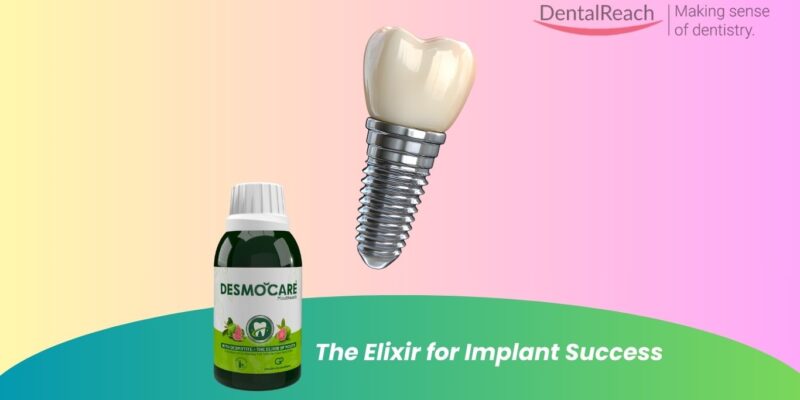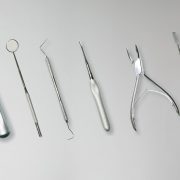(This is a part of the ‘Implant Dentistry– Updated Yet Simplified Series’ by prosthodontist & implantologist Dr Nupur Shrirao)
In the ever-evolving field of dental implantology, the demand for innovative solutions has never been greater. One emerging trend is the use of short or thin implants in extreme conditions where traditional implants might not be feasible. This article explores the effectiveness of these implants, their suitability for various dental scenarios, and essential design, surgical and prosthetic considerations.
Understanding short and thin implants
Traditional implants typically require a substantial amount of bone, which is not always available in patients with bone loss or anatomical constraints.
- Short implants are designed for areas with anatomical limitations like a drooping sinus floor with less residual bone height or proximity to vital anatomical structures like nerves.
- Thin implants are designed to offer alternatives in situations where bone density or mesiodistal space is limited, or in areas of poor bone width.
What are short implants?
Short implants are characterized by their reduced length, typically less than 10 mm. These implants are particularly useful in cases where there is insufficient bone height, especially in the posterior areas of the jaw. Because they don’t require extensive bone augmentation, they often present a less invasive option for patients.
Indications for Short Implants: Short implants can be used in almost all types of replacements whether fixed or removable including:
- Single and multiple fixed prosthesis in posterior jaw
- Type 1 and Type II bone.
- In the treatment of a severely resorbed edentulous mandible, with four short-length implants used to support an overdenture or six short implants used to support a fixed prosthesis.
- In edentulous maxilla, two short-length implants are additionally placed in the distal area, together with longer implants in the premaxilla to support a maxillary overdenture or a fixed prosthesis.
What are thin implants?
Thin implants, also known as narrow-diameter implants (NDI), are generally less than 3.5 mm in width. They are often considered for scenarios involving limited bone width or for patients who cannot undergo complex reconstructive and grafting procedures. These implants are frequently used for specific cases such as in the lower front teeth or with minimal bone availability mesiodistally.
- Category 1: Implants with a diameter of <2.5 mm (“Mini-implants”)
- Category 2: Implants with a diameter of 2.5 mm to <3.3 mm
- Category 3: Implants with a diameter of 3.3 mm to 3.5 mm
At the present time, most implants of <2.5 mm diameter are one-piece implants. One-piece implants with a diameter of >3.0 mm are rarely described.
Indications for each category:
Category 1:
- Support of definitive complete mandibular overdentures
- Support of interim prostheses, both fixed and removable
Category 2:
- Support of definitive complete mandibular overdentures
- Support of single tooth replacement in the anterior zone with narrow interdental width (maxillary lateral incisors and single mandibular incisors)
Category 3:
- Support of definitive complete overdentures
- Support of single tooth replacement in sites with reduced interdental and/or buccal-lingual width
- Support of multiple unit restorations
Design considerations
The design of short and thin implants plays a crucial role in their success. Here are some key design factors:
Short implants
- Thread design: Optimizing the thread pattern enhances primary stability and maximizes bone-to-implant contact. A deeper thread may provide better anchorage. Increasing the number of threads and a square thread design has a higher bone-implant contact percent.
- Implant shape: A tapered design can help in achieving better stability, particularly in soft bone.
- Surface treatment: Advanced surface coatings and textures can encourage osseointegration, improving the long-term stability of the implant.
- Width considerations: Choosing a wider diameter of implant with the short length results in lesser prosthetic failures. Most standard implant companies provide short implants with wide diameter only.
Thin implants
- Material selection: Using strong materials like titanium-zirconium alloy can compensate for the reduced diameter, ensuring the implant can withstand necessary occlusal forces.
- Length considerations: Slightly longer thin implants can help distribute loads more effectively and provide additional stability.
- Platform switching: Utilizing platform switching can reduce bone loss around the implant by altering stress distribution patterns.
Surgical considerations
Short implants
- Two step surgical protocol: A two stage surgery is advocated for short implants as it provides good primary stability during healing phase. The time elapsed between the surgical and load stage should be 4-6 months for maxilla and 2-4 months for mandible.
- Adapted surgical protocol: Enhanced initial implant stability can be achieved by eliminating a step in standard surgical protocol such as eliminating the countersink drill or eliminating the final drill in the standard drilling sequence. Soft bone drilling protocol should be followed in poor quality bone whereas, the final bone drilling is done with narrow drills rather than standard size drills.
Thin implants
- Gentle and atraumatic approach: Proper surgical technique is crucial to preserve the surrounding bone and soft tissue. This includes using sharp drills with adequate, intermittent irrigation to prevent bone overheating, which can compromise osseointegration.
- Undersized osteotomy: The initial osteotomy is often made slightly narrower than the final implant to allow the implant to self-tap and achieve high primary stability upon insertion.
- Apical and bicortical engagement: For maximum stability, especially in areas with lower bone density, apical engagement in dense bone and bicortical fixation (engaging both the buccal and lingual cortical plates) are often targeted.
- Ridge splitting: For knife-edge ridges that are too narrow for implant placement, a ridge-splitting technique may have to be additionally performed. This involves creating a mid-crestal osteotomy to expand the ridge and allow for the simultaneous placement of the thin implant.
Prosthetic considerations
Short implants
- Implant to abutment connection:Morse taper connection and internal connection is preferable compared to external hex as it induces less marginal bone loss.
- Occlusal table: Small occlusal table reduces the offset loads on the implant.
- Incisal guidance: Implants should follow a biomechanical approach similar to natural teeth to accommodate the higher bite forces in the posterior regions of the mouth. Incisal guidance of the anterior teeth eliminates lateral forces to the posterior teeth in all mandibular excursions.
- Splinting: Splinting implants increases the functional surface area of support and transmits less force to the prosthesis, the cement, abutment screws and the implant bone interface especially when placed in soft bone.
Thin implants
- Connection type: Internal conical implant-abutment connections are often preferred. They create a tighter seal that can minimize micro-movements, reduce bacterial leakage, and provide a more stable platform, which helps protect the surrounding bone and components.
- Prosthetic design: Careful prosthetic planning is needed to ensure a favorable crown-to-implant ratio and a healthy emergence profile. Over-contoured restorations on narrow implants can make hygiene difficult and increase the risk of peri-implantitis. Custom abutments can help achieve an optimal emergence profile.
- Splinting in Posterior: While once avoided, thin implants can be used with careful consideration for splinting, favorable bone density, and protective occlusal schemes to manage stress.
Advantages of Extreme Implantology
The use of these specialized implants offers several advantages:
- Less invasive procedures: Extreme implants is only in terms of sizes, but they often require minimal surgical intervention. This reduces recovery time and discomfort for patients.
- Cost-effective: There’s typically no need for additional procedures like bone grafting, which can save patients both time and money.
- Flexibility: Ideal for patients with unique anatomical challenges, expanding treatment options.
Challenges and Considerations
Despite their advantages, short and thin implants present specific challenges that dental professionals must consider.
- Stability and longevity: One concern is the potential for reduced stability compared to traditional implants. Shorter or thinner designs may not offer the same degree of support, necessitating careful patient selection and precise placement technique.
- Load distribution: The occlusal forces distributed on these implants must be carefully managed to prevent excessive stress. This might involve using multiple short or thin implants and splinting them, to distribute force evenly, which requires strategic planning and expertise.
Clinical outcomes
Recent studies have shown promising results for short and thin implants under specific conditions. When properly executed with the right patient selection, these implants can achieve similar success rates to traditional implants in selected scenarios.
| Implant Type | Indicated For | Potential Risks |
| Short Implants | Insufficient bone height | Reduced stability |
| Thin Implants | Limited bone width | Load distribution issues |
Short and thin implants represent a viable option in extreme implantology, offering new pathways for patients where traditional methods fall short. While there are challenges to overcome, the benefits of minimally invasive procedures and the ability to cater to unique anatomical needs make these implants an exciting development in dental care. Advancements in implant surface modifications and high standard of care in implant manufacturing, enables clinical success of these implants of extreme sizes.
However, the clinician must be experienced enough to carefully consider patient-specific factors and utilize appropriate surgical and prosthetic considerations mentioned above. To ensure that design considerations are followed, clinicians must use implant brands of standard quality, and in fact consider the premium brands for extreme implantology, as they are backed by research and follow stringent manufacturing protocols.
Conclusion
The use of short-length and narrow diameter implants allows treatment of patients who are unable to undergo complex surgical techniques for medical, anatomic or financial reasons. By reducing the need for complex surgeries short implants reduce morbidity, cost and treatment time. When placed considering all the critical biomechanical factors and using strict clinical protocol, these implants of extreme sizes can be a successful treatment option in atrophic ridges.
Further Reading
- ITI study modules
- Jain N, Gulati M, Garg M, Pathak C. Short Implants: New Horizon in Implant Dentistry. J Clin Diagn Res. 2016 Sep;10(9):ZE14-ZE17.
- Karthikeyan I, Desai SR, Singh R. Short implants: A systematic review. J Indian Soc Periodontol. 2012 Jul;16(3):302-12.
- Eik Schiegnitz, Bilal Al-Nawas. Narrow-diameter implants: A systematic review and meta- analysis Clin Oral Impl Res. 2018;29(Suppl. 16):21–40.
- Saad M, Assaf A, Gerges E. The Use of Narrow Diameter Implants in the Molar Area. Int J Dent. 2016;2016:8253090.




















Comments